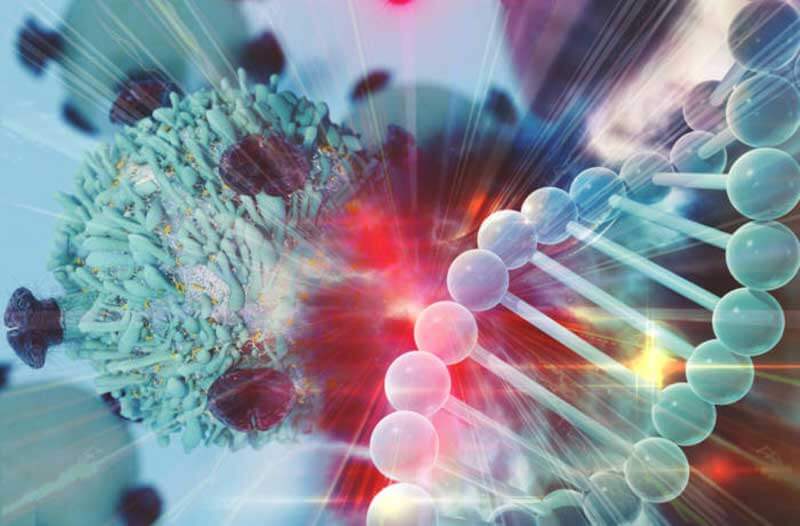- Advanced breast cancer patients have limited treatment options
- Doctors have completely eradicated a patient’s advanced breast cancer using immunotherapy
- The approach could theoretically work on other types of cancer as well
- There’s still a long way to go
With nearly 1.7 million new diagnoses and 520,000 deaths recorded in 2012 alone, breast cancer is the most common type of cancer and the second leading cause of cancer-related death among women worldwide. It accounts for approximately 12 per cent of all cancer diagnoses, with 1 in 8 women likely to develop invasive breast cancer during their lifetime. Men are affected too, but it’s far less likely, with just 1 in 1,000 suffering the same fate.
Thanks to advances in medicine, the 5-year survival rate for breast cancer has increased dramatically over the years, from 63 per cent in the 1960s to 89 per cent today. The survival rate is the highest when the disease is localised – 99 per cent of people survive this diagnosis – but it drops as the disease progresses. If the cancer has spread to the neighbouring lymph nodes, a patient’s odds of 5-year survival drop to 85 per cent, while for patients with stage 4 cancer and distant metastases, hope is slim: just 26 per cent survive.
Advanced breast cancer patients have limited treatment options
Surgery is the most common treatment for breast cancer, provided it’s discovered early enough, followed by chemotherapy, radiation therapy, or targeted therapy, depending on the stage of the disease and its molecular characteristics. However, for patients in advanced stages of cancer, treatment options are rather limited, and their prognosis is grim. Yet, there may be hope on the horizon.

Historically, breast cancer has been considered immunologically silent, which means it would usually go undetected by the immune system. However, several recent clinical studies have found evidence that immunotherapy could actually improve chances for breast cancer patients. Immunotherapy is a form of treatment that uses the patient’s own immune system to fight cancer, helping it recognise and kill tumour cells. Compared to conventional chemotherapeutic and targeted treatments, it has several advantages, including fewer side effects and lower chances of patients developing resistance.
Doctors have completely eradicated a patient’s advanced breast cancer using immunotherapy
One of these trials took place at the National Cancer Institute in Maryland, where a team led by Dr. Steven Rosenberg recently announced they were able to completely eradicate a woman’s advanced breast cancer using a groundbreaking immunotherapy treatment. Before she entered the trial, 49-year-old Judy Perkins had already undergone several rounds of chemotherapy. However, the treatment ultimately proved unsuccessful and the cancer spread to other parts, with tennis ball-sized tumours in her liver and secondary cancers throughout her body. The doctors said she only had three years left to live.
At this point, she was accepted into the National Cancer Institute’s clinical trial, where doctors were attempting to use an experimental form of immunotherapy to fight cancer. Here’s how it works. First, the doctors remove small pieces of tissue from the patient’s tumours and sequence its DNA to identify mutations specific to that cancer. Then they extract the patient’s immune cells from the tumour tissue and screen them to identify those that were most effective in targeting the cancer’s key mutations. Known as tumour infiltrating lymphocytes, or T-cells, these cells have managed to infiltrate the tumour tissue but failed to kill the cancer, because they were either too weak or there simply weren’t enough of them. Doctors then grow billions of these cells in the lab and inject them back into the patient’s body in the hope they’ll attack the cancer and destroy it.
The approach could theoretically work on other types of cancer as well
In Perkins’ case, 80 billion immune cells were injected into her body and she was also given pembrolizumab, a common cancer treatment drug. 42 weeks later, the cancer was completely gone, an unprecedented development for a disease in such an advanced stage. The patient remains cancer-free even two years after undergoing the treatment. The doctors admit that they’re not yet entirely sure how much of this success can be attributed to the modified T-cells and how much to the drug, which has been given to advanced breast cancer patients in the past, but hasn’t been proven particularly effective.
“This research is experimental right now,” says Dr Rosenberg. “But because this new approach to immunotherapy is dependent on mutations, not on cancer type, it is in a sense a blueprint we can use for the treatment of many types of cancer.” What makes this success even more impressive is that breast cancer usually doesn’t have many mutations, making it much harder for the immune system to differentiate it from healthy tissue. “The work shows that even cancers like breast cancer, which don’t have many antigens, are amenable to this sort of treatment. It would certainly be applicable in principle to a range of tumours, and even those in which immunotherapy hasn’t worked so well yet,” says Alan Melcher, a professor of translational immunotherapy at the Institute of Cancer Research in London.
There’s still a long way to go
This treatment offers a glimmer of hope for patients with advanced breast cancer. And doctors hope that it will work on other types of tumours as well, including ovarian and prostate cancer. “We are now at the cusp of a major revolution in finally realising the elusive goal of being able to target the plethora of mutations in cancer through immunotherapy,” says Laszlo Radvanyi, the scientific director of the Ontario Institute for Cancer Research. But there’s still a long way to go.
The next step involves assessing the effectiveness of the treatment through full-scale clinical trials. Experts warn that we still don’t know how effective the treatment actually is, because it’s only been successfully applied to one patient so far. “This is a remarkable and extremely promising result, but we need to see this effect repeated in other patients before giving hope of a new immunotherapy for incurable metastatic breast cancer,” says Simon Vincent, the director of research at Breast Cancer Now. This kind of therapy is also very complex and expensive, and can only be effective if the doctors are able to find enough infiltrating immune cells in a patient’s tumour. “The case with other TIL therapies in the past is that they’ve not been able to expand enough T cells in many patients, there aren’t enough to start with,” explains Melcher.
Although the research is still in very early stages, this is a groundbreaking development that offers new hope for the treatment of advanced breast cancer, and possibly even other types of cancer that were considered incurable until now. There’s still a long way to go before immunotherapy becomes a go-to method for cancer treatment, but there may finally be a light at the end of the tunnel.




